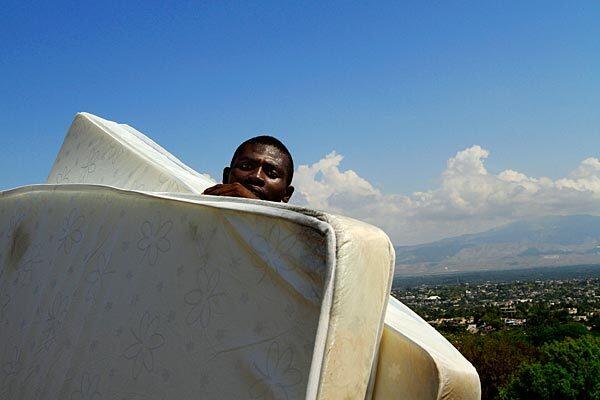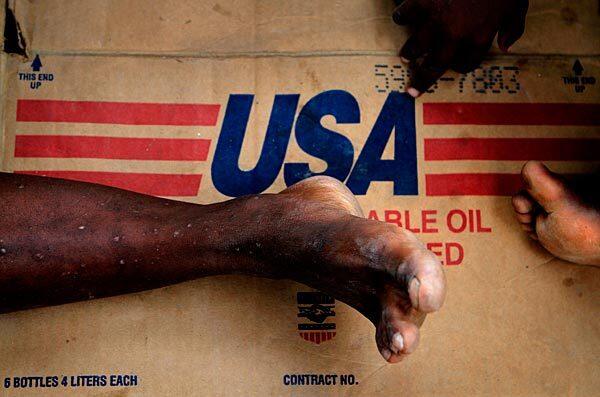
A woman, covered in mosquito bites, rests in the shade at a tent camp near Port-au-Prince’s Cite Soleil neighborhood. Officials are concerned about a possible malaria outbreak as the rainy season approaches.
See full story (Liz O. Baylen / Los Angeles Times)
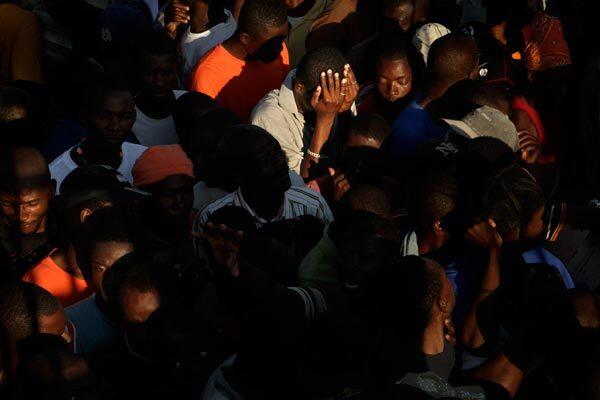
Hundreds of people, many of whom have waited for hours, crowd in to secure a place in line in Port-au-Prince where the international humanitarian organization Goal distributes food. Many Haitians still rely on aid three months after the earthquake.
See full story (Liz O. Baylen / Los Angeles Times)
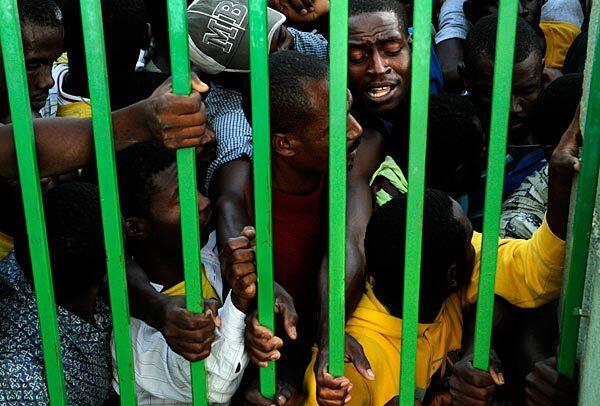
Haitians seek aid at the Goal distribution center.
See full story (Liz O. Baylen / Los Angeles Times)
Advertisement
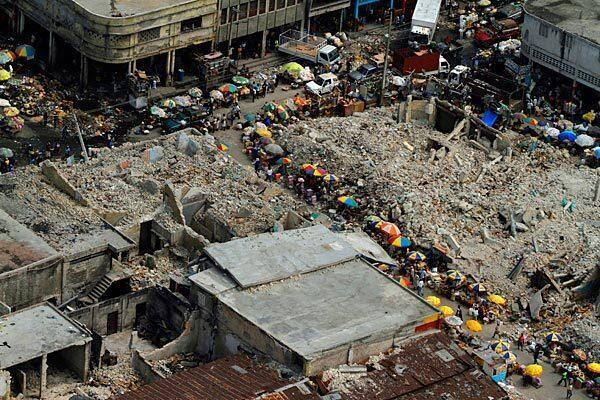
Shoppers crowd a street market among the ruins in Port-au-Prince.
See full story (Liz O. Baylen / Los Angeles Times)
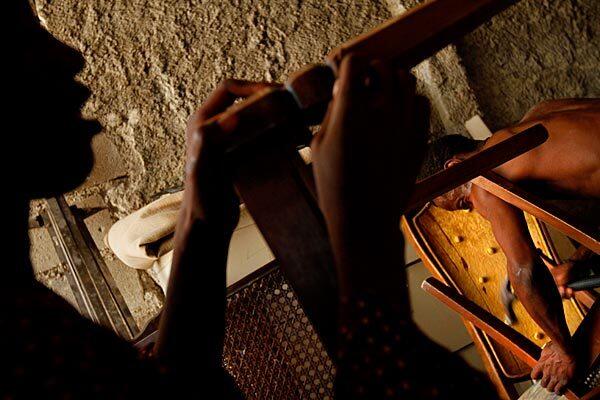
Peter Ones, left, and Laflpaer Harris, repair furniture at a shop. The shop and its business have been devastated by the earthquake.
See full story (Liz O. Baylen / Los Angeles Times)
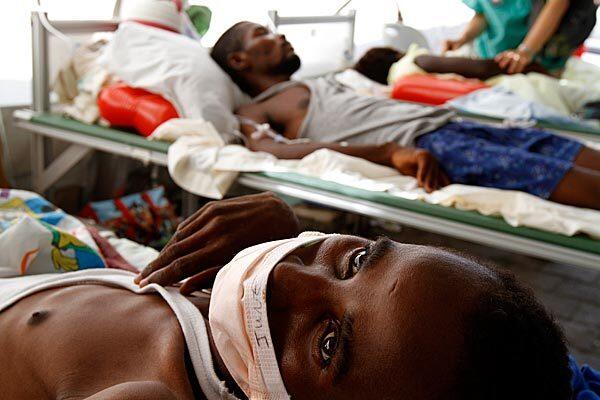
Jackson Pierre, 35, front, who is recovering from
See full story (Liz O. Baylen / Los Angeles Times)
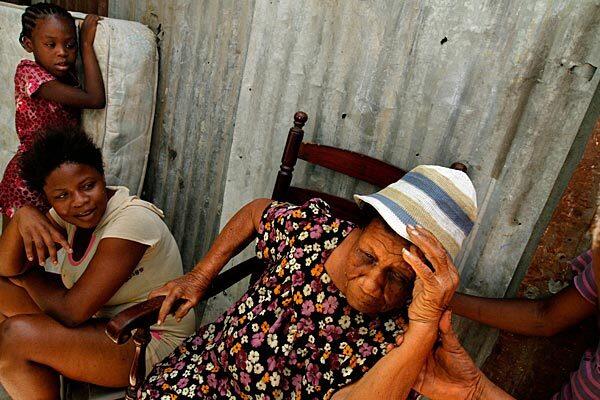
Claire Basiler, 80, at home with her grandchildren, Chelsea Pular, left, and Marie Claire Sentyber. She hasn’t been able to leave her block because she is too feeble to climb over 20 feet of rubble.
See full story (Liz O. Baylen / Los Angeles Times)
Advertisement
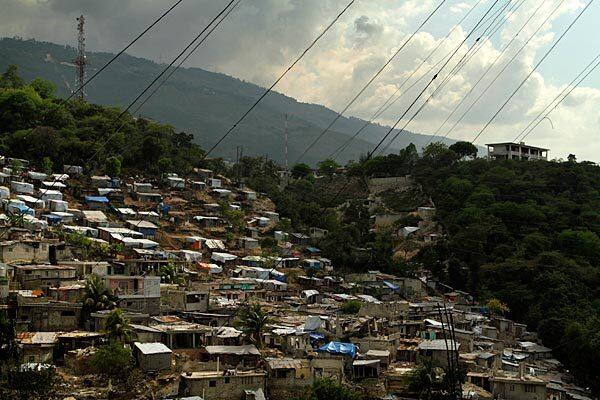
The U.N. hopes to relocate displaced Haitians living in a canyon called La Vallee de Bourdon. The International Organization of Migration says 8,000 people live in this valley, 2,500 of them in danger because of the rainy season.
See full story (Liz O. Baylen / Los Angeles Times)
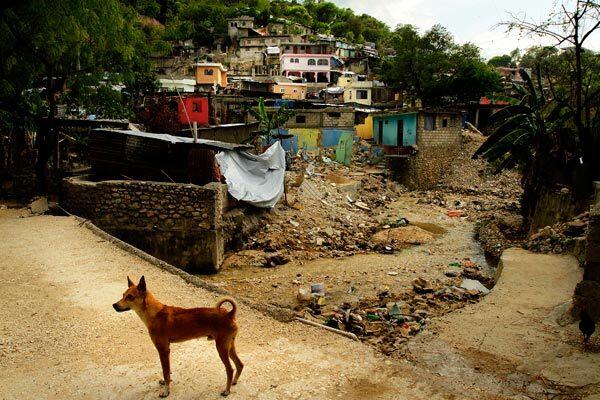
La Vallee de Bourdon.
See full story (Liz O. Baylen / Los Angeles Times)
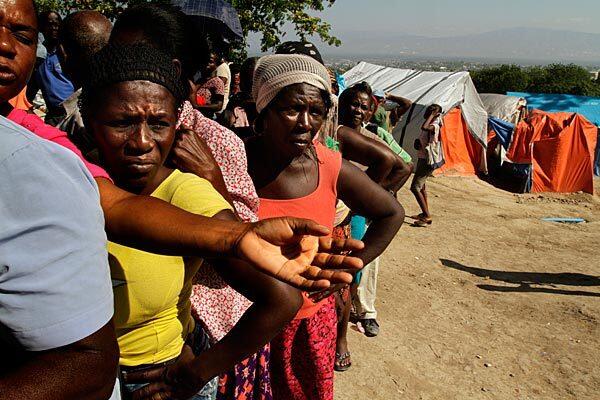
Louis Marie Carmeal, in yellow shirt, Roselar Solon, in salmon-colored tank top, and others wait in line at a hospital at the Petionville camp.
See full story (Liz O. Baylen / Los Angeles Times)
